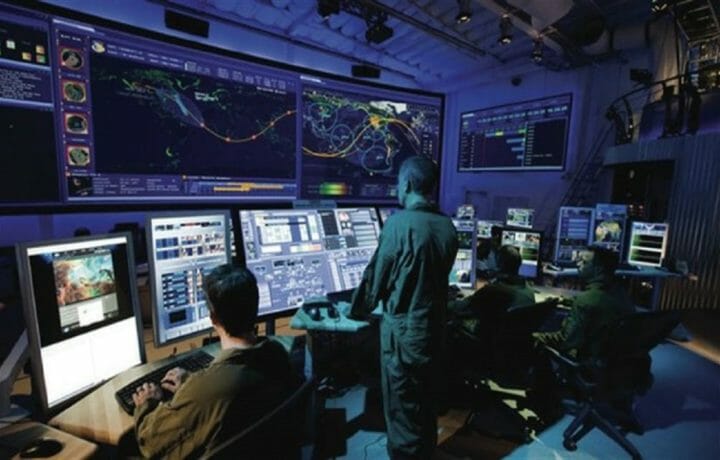Title 10 responsibilities and the Goldwater-Nichols Act are not things that normally cross the mind of young service members, or the average citizen. But those issues are about to take their place front-and-center now that the White House has signed Space Policy Directive 4, setting in motion the plan to establish a Space Force in the Department of Defense.
While the directive tells the DoD to prepare a legislative proposal to submit to Congress, you can be certain that proposal is already in the can and waiting for the Office of Management and Budget to be finished with the entire budget.
The Oval Office ceremony really didn’t contain any surprises for those who have been paying attention. It did, however, resurrect the general public’s confusion over how the Pentagon organizes for war. (“A Space Force and a Space Command?” people have asked). So let’s dive in.
Organizing around the Fourth physical domain
The Pentagon has slowly come to realize that space has taken its place alongside ground, air, and maritime as a physical domain of warfare, but is now fully committed to the idea. We organize our forces for each domain, and adding another military service for space will elevate the importance of the fourth war fighting domain to the level of the others.
If Congress goes along, the Space Force will become a separate service under the Department of the Air Force, akin to the Marines and the Department of the Navy (as I said would happen when the president first announced his proposal last year). The directive does tell the Pentagon to work out what a future separate Space Force Department would look like, but frankly, that would probably be a bridge too far for a long time to come. Creating a new service by taking the space-related functions from the other services—I still presume the Air Force’s Space Command will form the nucleus of the new service—and combining them into a new service is one thing. It doesn’t create a lot of new overhead. But there’s not much appetite on Capitol Hill for creating a new secretariat bureaucracy.
Space Command, meanwhile, will be equal to the 10 existing combatant commands. This new four-star headquarters, which does not need Congressional approval, will be responsible for the employment of space capabilities from each service, not just Space Force. This is the same as U.S. Special Operations Command, which is responsible for executing SOF missions around the world. To do that, it draws from the special operations forces that belong to the Army, Navy, Air Force, and Marine Corps.
The new Space Force will be responsible for the same “Title 10” responsibilities the other services have: recruiting, organizing, training, equipping, maintaining, etc. The service will be a “force provider” for Space Command.
Better odds than six months ago
The Pentagon has clearly been working to prepare congress for this proposal. Surprisingly, it looks like it may get some traction on Capitol Hill. House Armed Services Committee Chairman Adam Smith has been a Space Force skeptic, but he’s coming around. At the end of January, he told Politico that the proposal, obviously still under development at the time, was “promising.” He said, “That’s probably a good template to work off of, and then the devil is in the details. I believe that space needs to be emphasized.”
That’s far cry from his position last September, when he said “I don’t think a separate branch makes sense.” How Space Force fits into the whole argument over the DoD’s top line budget still remains an open question. Smith is still opposed to the administration’s plans to request $733 billion (or is it $750 billion?) for the next fiscal year, so the brass will have to make compelling case for the new force.
The budget’s release was delayed because the Office of Management and Budget was affected by the partial government shutdown. We should see the FY20 budget, including the numbers for Space Force, in early March, at which point we’ll be able to have a more detailed discussion of the proposal.



